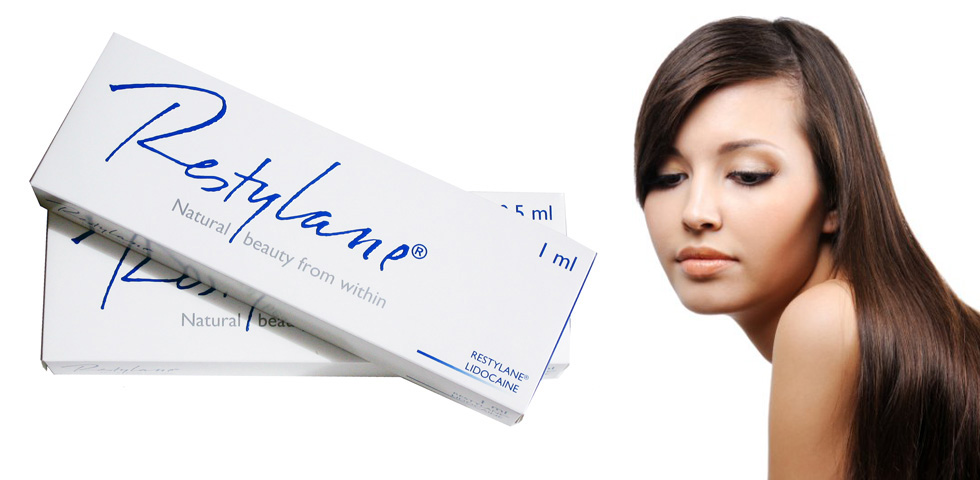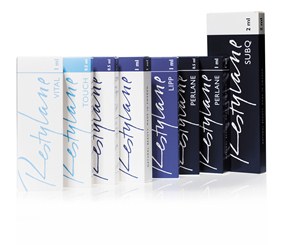Services

Restylane and Perlane Injection
Restylane and Perlane Injection
.jpg)
Application Features
Hyaluronic acid has become a highly sought after cosmetic surgery item in recent years. It has wide usage at present, including adding volume to the skin, modifying the face, and providing joint elasticity. Since hyaluronic acid is very convenient and safe to use and that results are almost immediate, it is the choice of many beauty conscious individuals.
♦What is Hyaluronic Acid.jpg)
Hyaluronic acid, HA, is commonly called hyaluronic acid or uronic acid. It is a natural polysaccharide found in connective tissue and dermis in colloidal form in order to help store moisture, increase skin volume, maintain skin elasticity, moisturize and lubricate the skin, making the skin looking full volumed and youthful.
♦Origin of Hyaluronic Acid.jpg)
Commercially available HA can be divided into two types: animal HA and non-animal HA. Animal HA is mostly extracted from cock crests or pig’s skin, but animal protein allergies, infections diseases, and quality of sources involves a certain degree of unpredictability. Therefore, professional doctors around the world generally use safer and more stable non-animal hyaluronic acid through artificially cultured, fermented, and extracted from oxalic acid bacteria.
♦Action of Hyaluronic Acid.jpg)
Hyaluronic acid possesses viscosity and scalability and is an ideal filling material. The molecules of injectable hyaluronic acid range from 500,000-1000/ml. The injectable hyaluronic acid used as subcutaneous filling has a higher molecular weight than HA for skin care use. Therefore, HA can be applied as an injectable HA to eliminate wrinkles and in cosmetic surgery. When injected into dermal tissue, it can modify depressed wrinkles that vary in depth, cheeks, lips, chin, and nose sculpting, or serve other purposes. It can also be used as an alternative to synovial fluid (i.e. joint cavity lubricant) for reducing pain. When applied in skin care products, it achieves powerful moisturizing and lubricating results, prolongs the skin’s moisture retention, and maintaining the skin ‘s moisture. Results can usually last for six months to one and half years, depending on personal metabolism and skin care. Of course, HA stability and concentration also affect the overall result.
♦Classification of Hyaluronic Acid.jpg)
Hyaluronic acid can be classified into injection HA, oral HA, and external HA.。
♦Injectable Hyaluronic Acid.jpg)
Hyaluronic acid injection filling is a type of recently developed biologically synthesized tissue filler. It features the advantages of high tissue compatibility, high stability, and low likelihood of allergies. In the field of cosmetic surgery, it is primarily applied to treat static lines and modify and sculpture the face
♦Scope of Injectable Hyaluronic Acid Usage Not limited to Local or Dynamic/static Fine Lines Other Usage :
Facial sculpture: including rhinoplasty, cheek augmentation, lip augmentation, chin padding, ear lobe enlargement, temple filling, and other simple facial contour sculpture.
Depression filling: acne atrophy and depressions, traumatic depressions.
It eliminates wrinkles without a trace. Immediate results can be achieved, as there is no redness, swelling, or recovery period. It is favored and preferred by beauty conscious individuals who wish to keep their cosmetic surgery a secret from others. This product that almost monopolizes the hyaluronic acid market is manufactured by Swedish Q-MED through microbial engineering.
 |
|
Restylane Product Series |
|
|
Particle size |
Action |
Duration of effectiveness |
|
Vital |
Active hyaluronic acid /ml round micro grains |
Full-face firming, neck/hand/knee/chest wrinkle improvement |
6-10months |
|
Lipp |
Lip hyaluronic acid particle size/ml: round grains |
Lip augmentation |
4-6months |
|
Touch |
micromolecular hyaluronic acid particle size /ml:500000 |
Fine lines, surface fine lines, tear ditch (nasojugal groove) |
4-6months |
|
Restylane |
medium molecular hyaluronic acid /ml:100000 |
Forehead lines, nasolabial folds |
4-6months |
|
Perlane |
particle size/ml:10000 |
Rhinoplasty, nasolabial folds, frown lines, cheeks |
4-6months |
|
Sub-Q |
macromolecular hyaluronic acid particle size/ml:1000 |
Risorius muscle, nasolabial folds, frown lines, chin, cheeks |
a half years and 2 years |
 |
Macromolecule SUBQ hyaluronic acid can achieve effectiveness for up to two years. |
Restylane Product Series.At present, six products that vary in molecular size are available. Ranked from large molecules to small molecules, they are: Touch, Restylane, Perlane,, SubQ, Lipp, and Vital.
|
Type of hyaluronic acid |
Medium molecules |
macromolecules |
Subcutaneous dosage form Mesotherapy |
Molecule weight |
Mesotherapy |
|
Molecule weight |
500,000/ml |
100,000/ml |
10,000/ml |
1,000/ml |
500,000/ml |
|
Injection site |
Upper layer o dermis |
Middle layer of dermis |
Lower layer of dermis or upper layer of subcutaneous layer |
Subcutaneous layer |
Dermis and its lower layer |
|
Duration of effectiveness |
About 6 months |
About 6-9 months |
About 1 year |
About 2 years |
About half a year |
|
Injection site |
Around the eyes and |
Lifting of fine lines/wrinkles/ Lip augmentation |
Volume filling/nasolabial folds/nose sculpting |
Facial contour modification |
Neck/hand/chest wrinkle modific |
♦Oral Hyaluronic Acid.jpg)
Hyaluronic acid found in the body diminishes with age, resulting in skin dryness, dehydration, aging, wrinkles, coarseness, and dullness. Skin aging is mainly caused by changes in collagen, the result of depleted hydrophilic hyaluronic acid. Oral administration of hyaluronic acid to replenish the shortage of hyaluronic acid in the body and maintain collagen function is also an alternative to skin care.
♦External Hyaluronic Acid.jpg)
In general, healthy epidermis has 12-15% of water content. When the water content falls below 10%, the skin becomes dry and peeling occurs, leading to skin sagginess, aging, and even spots. Appropriate replenishing of hyaluronic acid allows the skin to absorb more water and enhances the skin’s water retention ability and elasticity. Although hyaluronic acid is found in the human skin, starting age 25, the body’s hyaluronic acid content gradually decreases. By the age of 30, the hyaluronic acid content drops to 65%; by the age of 60, the hyaluronic acid is only 25% that of young skin, and the decline continues with age. Over time, the skin gradually loses its elasticity and radiance, while aging, wrinkles and sagginess subsequently set in. Hyaluronic Acid, also known as HA, possesses high water absorbency and retains water contents, thereby increasing the skin’s water retention and achieving lasting moisturizing. Hyaluronic acid is an ideal moisturizing content for dry, aging, and severely dehydrated skin.
Treatment Process
Celanese injection site→apply anesthesia→disinfect injection site→inject hyaluronic acid
Precautions
| 1. Supplement a facial mask within 48 hours after an injection has been administered. Do not press the injection site and perform proper moisturizing. |
| 2.Slight redness, swelling, and itchiness as well as a soft touch at the injection site will be experienced after an injection has been administered. The symptoms usually subside after one or two weeks. |
| 3.The injection site will be prone to bruising and bleeding if aspirin or other similar anticoagulants are taken. It is recommended patients discontinue medication for several days before receiving an injection. |
| 4.Do not engage in sunbathing, stay in the sauna room, or go to extremely cold places, as there is a possibility of filling material denaturation before bonding with skin tissue. |
| 5.Contraindication: Pregnant women, those allergic to pharmaceutical ingredients, and those taking muscle relaxants. |
Q&A
Q:Why is hyaluronic acid injections used in cosmetic surgery?
A:Hyaluronic acid that possesses viscosity and scalability and is an ideal filling material. In cosmetic surgery applications, hyaluronic acid injected into dermal tissue can modify depressed wrinkles that vary in depth, fill cheeks, lips, and chin to create extra volume, sculpture the nose, and serve other purposes.
Q:Does hyaluronic acid lead to infections or rejections?
A:No, it does not. With mad cow’s disease that has cast a shadow on collagen use and animal hyaluronic acid that has drawn safety concerns, non-animal hyaluronic acid is considerably safer. Hyaluronic acid is better than collage for two reasons: not causing allergies and not triggering the onset of infections. At the same time, hyaluronic acid also maintains longer lasting results than collagen.
Q:What are the preoperative precautions? Are injections painful? What postoperative care should be noted?
A:Confirm with the surgeon regarding expected outcome and postoperative care. The surgeon will apply local anesthesia before surgery. Therefore, the process is basically pain free, but slight tingling and swelling may be experienced. Try not to rub or massage the site within three days after surgery to avoid hyaluronic acid displacement. Swelling will subside after about one week.
Case
♦Case
 |
|
| Hyaluronic acid injection can turn thin lips symbolizing a bitter fate into plump lips. |
 |
|
| Originally asymmetrical sides of the chin improved through chin padding surgery to achieve the feminine V-line. |
 |
|
| The retracted chin viewed laterally pulled outward to enhance the feminism. |
 |
|
| The improved retracted chin line, looking soft and three-dimensional after surgery. |
 |
|
| The improved retracted chin line, looking soft and three-dimensional after surgery. |
 |
|
| The improved retracted chin line, looking soft and three-dimensional after surgery. |
 |
|
| The improved retracted chin line, looking soft and three-dimensional after surgery. |